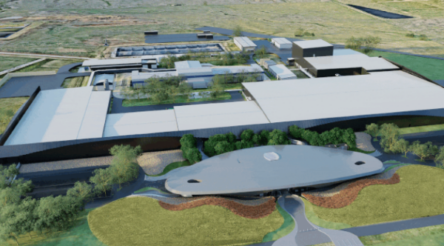A new deal plan for manufacturing – supporting a transforming and vital industry by Alex Kingsbury

Our campaign to crowd source a new deal plan for manufacturing post Covid-19 moves onwards. Alex Kingsbury discusses how our advanced manufacturers have responded to necessity in the current crisis and how we can encourage a flexible and sophisticated manufacturing sector into the future. Submissions to [email protected].
As Warren Buffet once said, “Only when the tide goes out do you discover who has been swimming naked”. It’s a good analogy for business and investment, but also an excellent analogy for sovereign manufacturing capability. The COVID-19 crisis is like a metaphorical tide. It has exposed supply chain risks and pressure-tested industrial sovereignty in a way not seen in modern times. Some nations have fared quite well, whereas others have been left wanting. Here in Australia we are left wondering how we measured up.
Many haven’t realised this, but manufacturing has been quietly transforming over the last two decades. Australia’s manufacturing industry today is built on innovation, entrepreneurship, and competitive advantage. High value products underpinned by industrially-driven R&D and supported by high levels of intellectual capital are the basis of our comparatively small, but vital, manufacturing capability.
Advanced manufacturing technologies such as additive manufacturing have become a feature of many competitive businesses. This investment made in additive manufacturing capability has certainly paid off during the recent crisis. Using our domestic additive manufacturing capability we have been able to design, print, and assemble essential PPE for our frontline health workers. This effort has been coordinated between local industry, our hospitals, and our universities.
Rapid manufacturing of PPE close to the point of need has demonstrated how quickly AM technology can pivot to meet acute needs where traditional supply chains have failed us. This is just one example highlighted by the current pandemic; however, the versatility of AM technology has been harnessed by a diverse number of industries for many years now.
Additive manufacturing is an enabling technology: it drives rapid development in a number of fields. It supports industries such as aerospace and defence, medical and dental, mining and oil and gas, automotive and transport, and consumer goods. The same applies for advanced manufacturing technologies more broadly. Advanced manufacturing cuts across all industries critical to Australia’s economic success. A healthy and robust manufacturing sector is the backbone of any sophisticated and industrialised society.
It is unfortunate that Australians no longer seem to identify as being a nation that ‘makes stuff’. It is doubly unfortunate that it took a pandemic to highlight how critical our sovereign manufacturing capability is. But it is wonderful that, through this crisis, our small but essential manufacturing sector was able to provide the solutions needed. So, how can we better support our manufacturing sector?
- Bi-partisan support
Governments come and go, and with a three-year election cycle, intelligent policies need to be developed that will stand the test of time. This means that both sides of the political divide need to agree that they will take carriage of a long-term vision for manufacturing in Australia. Recent times have shown that cooperation in the nation’s interest is possible, and as has been proven, manufacturing is too important a sector to play political football with, or even worse, ignored.
- Critical value chains
Manufacturing is the final element in a broader value chain. We have succeeded in this crisis to date only by running down inventories of raw materials and inputs sourced from outside Australia. A broader and deeper disruption to supply chains would reveal that our critical value chains are not secure. We need to scenario plan for more than just a pandemic to ensure that the value chains that are important to us are secure and future proof.
- Funding streams
We do not have a culture of investment in manufacturing in Australia. The reasons are multi-faceted but are largely rooted in a lack of identity with manufacturing success in this nation. Businesses from deep tech start-ups to SMEs needing to break through to the next phase of growth are struggling to attract capital at reasonable rates. Our AU$2.7 trillion superannuation fund should be mandated to invest in a diversified portfolio of Australian manufacturing businesses. This is truly an investment in our future.
- Support for R&D
Our universities and research organisations were some of the earliest adopters of advanced manufacturing technologies. Through these institutes, advanced manufacturing capability has been showcased to industry. As a result, industry-research partnerships have proliferated, and led to many highly successful Australian manufacturing businesses. Funding for research through such bodies as the AMGC and the IMCRC has catalysed industrial research, intellectual property, business growth, and more jobs; however, these bodies have a limited lifetime and are soon to conclude. A next generation of this support must be mapped out and committed to, this time with additional supports in place to fund early-stage research to fuel the next generation of Australian manufacturers.
To return to the beach analogy, as the pandemic continues to pull the tide back on the world, Australia has been left looking pretty reasonable. Whether we’re wearing boardies or budgie smugglers (your choice), we haven’t exactly been caught out, but we’re still vulnerable. This crisis has shown that our manufacturing industry has inherent sophistication and flexibility. What we need now is a long-term, sustaining manufacturing policy supported by both sides of government that will support jobs, economic growth, and in all ways, protect our national interest.
Alex Kingsbury is Additive Manufacturing Industry Fellow, RMIT, and Managing Director, Additive Economics.
@AuManufacturing’s new deal plan for manufacturing is brought to you with the support of Bosch Australia Manufacturing Solutions

Picture: Alex Kingsbury
Subscribe to our free @AuManufacturing newsletter here.
@aumanufacturing Sections
Analysis and Commentary Awards Defence Manufacturing News Podcast Technology Videos










